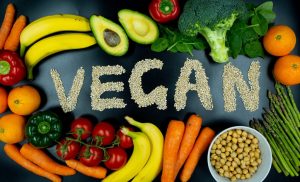The Gluten-Free Diet: Navigating a World of Flavor and Health
Understanding Gluten: Gluten is a protein found in wheat, barley, rye, and their derivatives. For individuals with celiac disease, non-celiac gluten sensitivity, or wheat allergy, consuming gluten can trigger adverse reactions, leading to digestive issues, inflammation, and other health complications.
Gluten-Free Basics: A gluten-free diet eliminates all sources of gluten, including wheat, barley, rye, and their derivatives. It focuses on naturally gluten-free foods such as fruits, vegetables, lean proteins, dairy, nuts, seeds, legumes, and gluten-free grains like rice, quinoa, millet, and buckwheat.
Reading Labels: When following a gluten-free diet, it’s crucial to read food labels carefully to identify hidden sources of gluten. Look for gluten-free certification symbols or ingredients lists that explicitly state “gluten-free” to ensure that products are safe to consume.
Gluten-Free Cooking and Baking: Explore gluten-free cooking and baking techniques to create delicious meals and treats without gluten-containing ingredients. Experiment with alternative flours like almond flour, coconut flour, chickpea flour, and gluten-free baking mixes to achieve satisfying results.
Whole, Minimally Processed Foods: Emphasize whole, minimally processed foods in your gluten-free diet to maximize nutritional value and flavor. Incorporate plenty of fresh fruits and vegetables, lean proteins, healthy fats, and gluten-free grains to provide essential nutrients and support overall health.
Gluten-Free Substitutes: Explore gluten-free alternatives to your favorite gluten-containing foods, such as gluten-free pasta, bread, crackers, cereals, and baked goods. While these products may differ in texture and taste from their gluten-containing counterparts, they offer options for enjoying familiar foods without gluten.
Gluten Cross-Contamination: Be vigilant about preventing cross-contamination when preparing and serving gluten-free meals. Use separate utensils, cutting boards, and kitchen equipment for gluten-free foods, and avoid sharing cooking surfaces with gluten-containing items to prevent inadvertent exposure to gluten.
Eating Out Safely: When dining out, communicate your dietary needs to restaurant staff and inquire about gluten-free options on the menu. Choose restaurants that offer gluten-free menus or have knowledgeable staff who can accommodate gluten-free requests and prepare meals safely.
Gluten-Free Community Support: Join online forums, support groups, or social media communities for individuals following a gluten-free diet to connect with others, share experiences, and exchange tips and recipes. Building a support network can provide encouragement and valuable resources on your gluten-free journey.
Nutritional Considerations: While a gluten-free diet can be nutritious, it’s essential to pay attention to nutrient intake and ensure adequate consumption of vitamins, minerals, fiber, and protein. Consider consulting with a registered dietitian specializing in gluten-free nutrition to develop a well-balanced eating plan tailored to your individual needs.
By embracing a gluten-free lifestyle and exploring the diverse array of gluten-free foods and recipes available, you can enjoy a flavorful and fulfilling diet while managing gluten-related health conditions and promoting overall well-being. Focus on nourishing your body with wholesome, naturally gluten-free foods and savoring the delicious flavors and textures that gluten-free eating has to offer.









